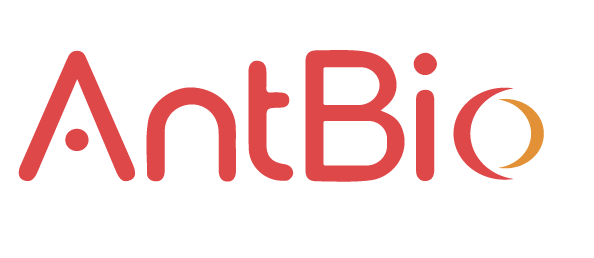In Vitro Differentiation Protocol for Th1 and Th17 Cells

Introduction to T Cell Subsets
T Cell Subsets
CD4+ T cells can be classified into Th1, Th2, Th17 cells, and regulatory T cells (Tregs).
Th1 cells are primarily regulated by the transcription factors STAT4 and T-bet. They secrete cytokines such as IFN-γ, IL-12, and TNF-α, playing a critical role in cellular immunity against intracellular pathogens and tumors.
Th2 cells are regulated by the transcription factors STAT6 and GATA3. They secrete cytokines such as IL-4, IL-5, and IL-13, contributing to humoral immunity, allergic responses, and defense against parasitic infections.
Th17 cells are a subset of T helper cells that specifically secrete IL-17 and are regulated by RORγt. They differentiate from CD4+ T cells under the combined induction of TGF-β and IL-6.
Tregs mediate immune regulation through the secretion of inhibitory cytokines (e.g., IL-10, TGF-β) and cell-to-cell contact, maintaining immune homeostasis.
Practical Protocols
Th1 Cell Differentiation
Th1 cells are a subset of helper T cells that differentiate in response to antigens and IL-12. Differentiated Th1 cells primarily secrete IFN-γ and TNF, along with IL-2, IL-2Rα, IL-12Rβ2, and IL-18. Th1 cytokines are associated with the proliferation, differentiation, and maturation of cytotoxic T lymphocytes (CTLs), promoting cell-mediated immune responses.
Protocol:
1. Select female C57BL/6 mice and euthanize them by cervical dislocation. Harvest the spleen and immerse it in pre-cooled PBS.
2. In a biosafety cabinet, gently grind the spleen using a syringe plunger until no visible clumps remain. Pipette the cell suspension repeatedly.
3. Add an appropriate volume of PBS, collect the cells, and filter the suspension.
4. Centrifuge at 300 × g for 5 minutes, discard the supernatant, and wash the cells with PBS.
5. Isolate CD4+ T cells using magnetic bead separation. Adjust the cell concentration to 2 × 10^6 cells/mL in RPMI 1640 supplemented with 10% FBS. Add 50 µL of CD4+ T cells per well to a 96-well plate pre-coated with CD3 antibody, with three replicates.
6. Add CD28 antibody (final concentration: 2 µg/mL), IL-12 (10 ng/mL), IL-2 (10 ng/mL), and IL-4 antibody (10 µg/mL). Adjust the total volume to 200 µL with culture medium.
7. Incubate at 37°C with 5% CO2 for 4 days.
8. Re-stimulate the cells and analyze differentiation and key cytokine levels (e.g., IFN-γ, IL-2) using flow cytometry or supernatant assays.
To induce Th2 differentiation, replace the cytokines with IL-4, IFN-γ, and IL-12.
Th17 Cell Differentiation
Th17 cells secrete cytokines such as IL-17 (IL-17A and IL-17F), IL-22, and IL-23, which are closely associated with autoimmune diseases and tissue inflammation.
Protocol:
I. Isolation of Human Peripheral Blood Lymphocytes (PBMCs)
Follow the instructions of the human lymphocyte separation kit to isolate PBMCs using density gradient centrifugation:
1. Add 3 mL of human lymphocyte separation medium to a 15 mL centrifuge tube and let it equilibrate to room temperature.
2. Slowly layer 3 mL of fresh blood on top of the separation medium, maintaining a clear interface.
3. Centrifuge at 2000 rpm for 30 minutes at room temperature. After centrifugation, the upper layer contains plasma, the middle layer contains the separation medium, and the cloudy interface contains PBMCs (lymphocytes and monocytes). The bottom layer contains red blood cells and granulocytes.
4. Carefully transfer the PBMC layer to a new tube, wash twice with saline, centrifuge at 1000 rpm for 10 minutes, and discard the supernatant. Resuspend the cells in culture medium and count for further use.
II. Cytokine and Antibody Induction for Differentiation
1. Seed cells at a density of 1 × 10^6 cells per well in a plate pre-coated with hCD3 antibody.
2. Add hCD28 antibody (1 µg/mL), hIL-1β (10 ng/mL), hIL-6 (10 ng/mL), hTGF-β (1 ng/mL), and hIL-23 (10 ng/mL).
3, Incubate at 37°C with 5% CO2 for 3 days to induce Th17 differentiation.
III. Flow Cytometry Analysis
1. Add PMA (20 ng/mL), ionomycin (1 µg/mL), and GolgiStop (1 µL/mL) 4–6 hours before staining. Centrifuge at 1000 rpm for 5 minutes, collect the supernatant, and store at -20°C for further analysis.
2. Resuspend the cell pellet in 1 mL of staining buffer and centrifuge at 1000 rpm for 5 minutes. Discard the supernatant and resuspend the cells in 100 µL of anti-CD16/CD32 antibody working solution. Incubate at 4°C for 20 minutes.
3. Wash the cells once with staining buffer, resuspend in 100 µL of CD4 fluorescent-labeled antibody working solution, and incubate in the dark at 4°C for 30 minutes.
Wash the cells once with staining buffer, resuspend in 250 µL of buffer, and incubate in the dark at 4°C for 20 minutes.
4. Wash the cells twice with Perm/Wash buffer, resuspend in 50 µL of intracellular fluorescent-labeled antibody (e.g., IL-17A antibody) working solution, and incubate in the dark at 4°C for 30 minutes.
Wash the cells twice with Perm/Wash buffer, resuspend in 500 µL of staining buffer, and analyze by flow cytometry. Determine the percentage of CD4+IL-17A+ cells among CD4+ T cells.
Product Information
| Gatalog Num | Product Name | Product Parameters | Price |
| UA040052 | IL-6 Protein, Human | Host : Human | $960 |
| Expression System : E.coli | |||
| Conjugation : Unconjugated | |||
| UA040052-STD | Human IL-6 Standard for Quantitive Assays | Host : Human | $200 |
| UA040047 | IL-1β Protein, Rat | Host : Rat | $796 |
| Expression System : E.coli | |||
| Conjugation : Unconjugated | |||
| UA040072 | IL-1β Protein, Mouse | Host : Mouse | $760 |
| Expression System : E.coli | |||
| Conjugation : Unconjugated | |||
| UA040151 | IL-1β Protein, Human | Host : Human | $164 |
| Expression System : E.coli | |||
| Conjugation : Unconjugated |




